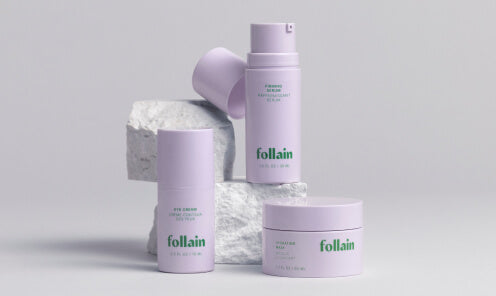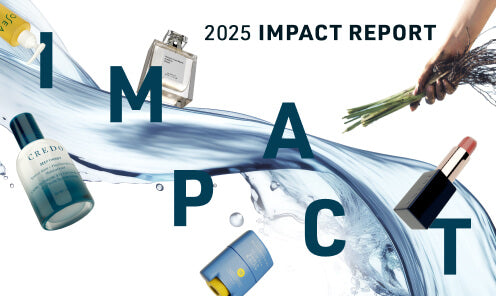Letter from Mia Davis, Director of Mission
To the team at Credo, "clean beauty" means safer, more sustainable ingredients, and skin care and makeup products that work well. The $60 billion cosmetics industry uses thousands of chemicals in its products—many of which are perfectly safe for even the most sensitive people, and some of which are organic and sustainable. But too many of the ingredients used are potentially harmful to human health and ecosystems, and pollute the environment.
When I talk about clean beauty with people new to the subject, I sometimes hear “the ingredients used in skin care and cosmetics- they’re such small quantities. Can tiny amount of chemicals really make a difference to a person’s health or the environment?”
The answer is “yes,” and here are some of the reasons why.
Small amounts of toxic chemicals can add up to harm.
We don’t encounter potentially harmful chemicals one at a time. This is not a controlled experiment, this is life, and unfortunately, toxic chemicals are found everywhere. Air pollution, clothing, packaged foods, water bottles, cosmetics, office furniture, playground equipment…We inhale, eat, and absorb potentially harmful chemicals every day. Small exposures can add up.
We know that small doses of certain chemicals can affect health. Some chemicals are potent at very low levels—some of them can actually be more potent at low levels than at high levels. We’re taught that “the dose makes the poison,” meaning the more you take, the more dangerous it can be. That’s true for many substances we encounter, but not necessarily for all. (Hormone disrupting chemicals, for instance.)
There may be small amounts of chemicals in the final product, but the overall "footprint" of the chemical was probably not so small. A "footprint" refers to all that went into growing, manufacturing, processing, shipping, use, and/or disposal of a given material. For example, the oil extraction, processing chemicals and huge amount of energy used to make kilos of a given synthetic chemical, before a small amount of up even ends up in the goop—that would be one part of the overall chemical footprint.
How did this happen?
In the US, cosmetic chemicals can hit the market—and therefore our bodies, our kids, our homes, our environment—without safety testing. That’s right: no agency or institution is ensuring that.
Chemicals are safe for our long-term health before companies sell them to us.
Growing and extraction methods for chemical feedstocks (e.g. the building blocks or starter chemicals) can be toxic and highly unsustainable as well. Fortunately, there is a demand for "greener" ingredients from informed consumers, so our industry has more options for organic, natural, and fair ingredients than ever before.
A double standard?
The European Union has banned or restricted about 1,300 chemicals from use in cosmetics.
The US? About 30.
That's crazy!
Some global companies have pledged to comply with the EU regulations in every market they serve, but others have not, meaning that they might be making a less-safe version of their products for the US market.
So what do we do?
Skin care and makeup are products that we use every single day.
But they're not lifesaving medical devices or drugs. Cosmetics should not be presenting a health risk to users, or polluting communities or destroying ecosystems. The good news is: this problem has a solution, and together, we can get there.
We need to work to reform the way the chemicals are made in the first place.
This will require both market and legislative changes. To that end, Credo has joined the NOHBA Natural & Organic Health and Beauty Alliance to roll up our sleeves and work with other members to push our industry forward.
Credo is also working with our brand partners, every single day. The brands we sell avoid the most toxic chemicals used in our industry, and we will begin to help them to evaluate the chemicals that they do choose to use in their products so that they’re making informed, safer decisions.















